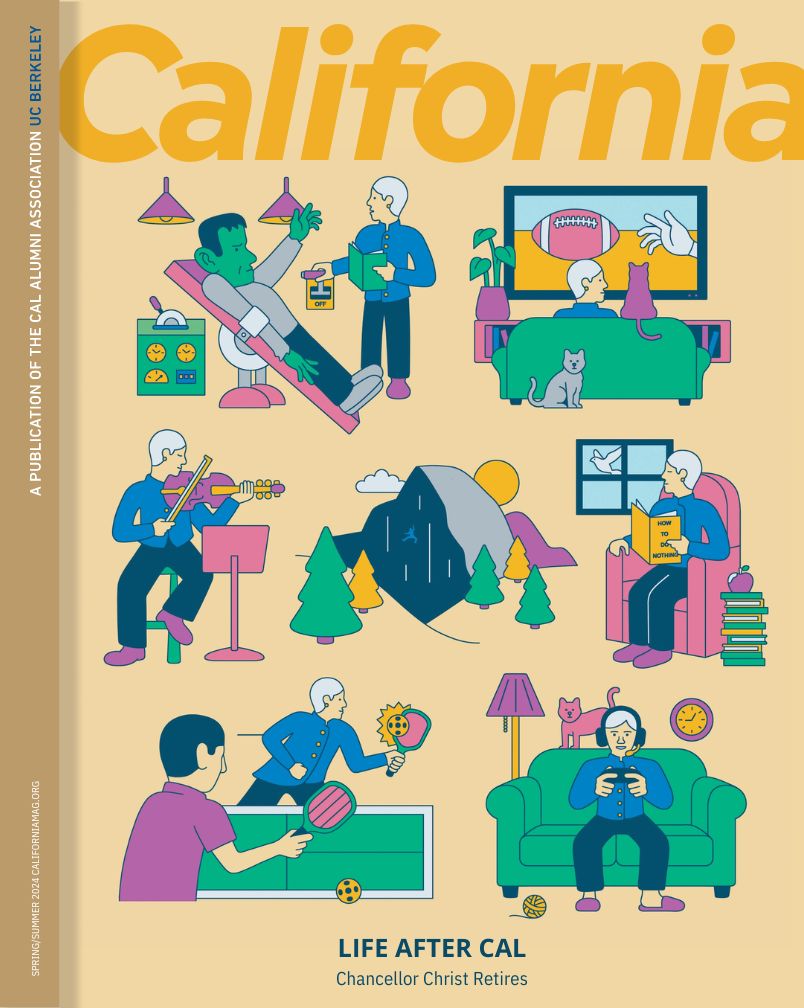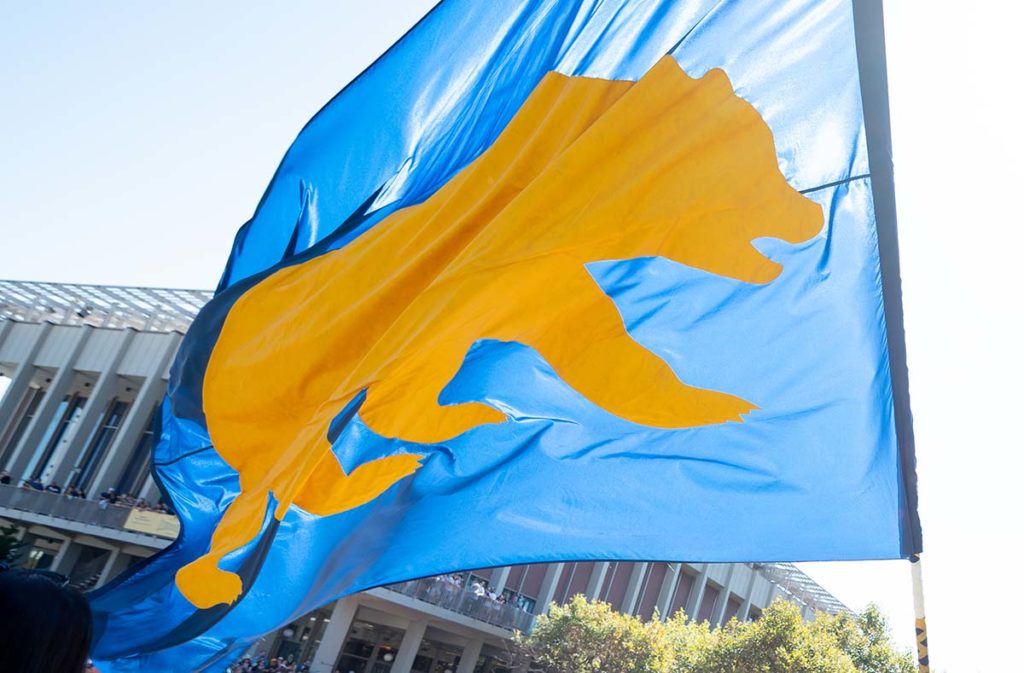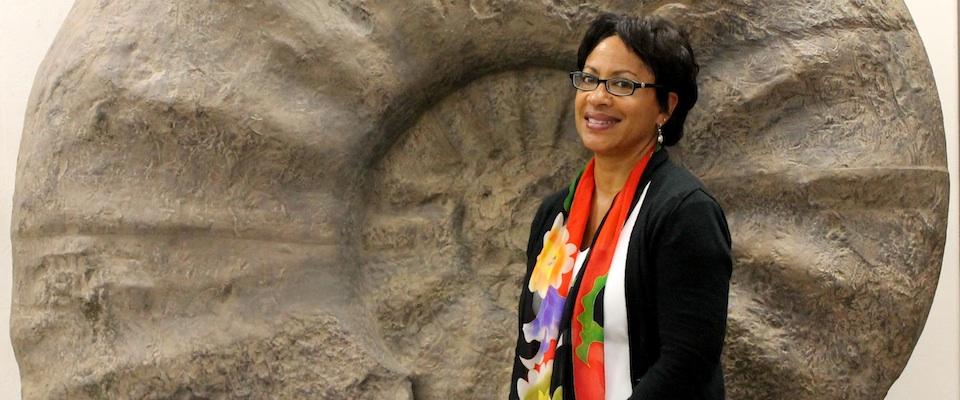Today UC Berkeley scientists are announcing that they have probably identified, in samples returned from a NASA probe, particles of interstellar matter—the first samples of “stardust” from beyond our solar system.
Obtaining the dust motes has been an achievement of staggering technical proficiency in extracting the infinitesimal from the infinite.
Imagine the largest swimming pool you’ve ever seen, Olympic-sized, filled with some two-thirds of a million gallons of water. Someone has flung a pinch of incredibly fine sand into the pool and that sand has neutral buoyancy, so that it suffuses the entire pool. Imagine trying to retrieve a few grains of sand from that pool with a very small net.
Now imagine something much, much more difficult.
What NASA’s Stardust mission did was to launch a probe into space in 1999, have it interdict the orbit of a comet at a point 250 million miles distant from the Earth, collect samples from the comet’s tail and those millions of miles of void, and return those samples—traveling nearly 29,000 miles per hour—safely to a patch of desert in Utah six-and-a-half years later.
And that may have been the easy part.
Because after all of that, the researchers involved still had to isolate and struggle to retrieve stardust from the samples they had collected.
The collector itself was a tennis-racket sized aggregation of small, foil-wrapped bricks. These bricks were made of aerogel, a material almost as light as air itself and that has been described as solid smoke. One side of this tennis racket was held out into the comet’s tail, the other pointed toward the onrushing cosmos. The idea was that tiny pieces of material from the comet’s tail and even tinier pieces of the dust that drifts between the stars would embed themselves into the bricks of aerogel.
The cometary dust was the easier of the two to isolate, because there was a lot of it and it weighed whole nanograms, or billionths of a gram, says Anna Butterworth, a researcher and analytic chemist at Berkeley’s Space Science Laboratory. So that came first. After two years of work on the cometary matter, scientists were confident enough to begin looking on the other side of the racket for the interstellar matter, which turned out to be not only much rarer, but to weigh only trillionths of a gram and to be smaller than a single cell of baker’s yeast.
They have found evidence for seven such particles so far. Doing so took six years.
“These are the most challenging extraterrestrial samples we have ever collected—and by we, I mean humanity, I don’t just mean me,” Butterworth says.
The first report on the particles appears in the Aug. 15 issue of the journal Science, written by lead author Andrew Westphal, a physicist at UC Berkeley’s Space Sciences Laboratory, and 65 co-authors.
The pieces of interstellar matter are called stardust because they are heavy elements expelled by dying stars. On the time scale of the universe, such matter is relatively young, less than 50 to 100 million years old, and is thus a relatively recent picture of our galaxy.
Butterworth says that when Stardust launched in 1999, no one had yet figured out how they were going to identify and retrieve stardust from the aerogel bricks. On the other hand, she adds, the mission would never have been launched if they had waited to figure it out first. Although, she says, “there was a naive expectation, perhaps, that there would be little lumps of rock” instead of the motes found so far.
To peer deeper into the spaceward-facing aerogel bricks in search of dust motes, scientists first had the spaceward aerogel bricks imaged by an automated scanning microscope, each half-millimeter square photographed some 43 times at different levels of focus. Then someone had to look for impact tunnels in these series of images, called fields of view. If the lab had hired someone to simply go through these images for 40 hours a week for an entire year, that person would have been able to examine one million fields of view—and it still wouldn’t have been enough, Butterworth says.
Instead, scientists turned to online volunteers in a program called Stardust@home. The program was based on the popular Seti@home program, which asked volunteers to donate their computer’s unused processing power to analyze radio signals from space. However, Stardust@home volunteers—who took to calling themselves “Dusters”—weren’t volunteering their computers’ spare time but rather their own. They would be looking at fields of view themselves and identifying likely impact tracks. So far, some 30,000 Dusters have looked at over a million fields of view, and each field of view has been looked at by multiple Dusters, reducing the odds that something has been missed. The Dusters identified 69 likely tracks; the Berkeley team another two.
Once likely targets were spotted, the team that Butterworth works in took over, working remotely, trying to eliminate every possible track until they were left with only the tracks most likely to have come from beyond our solar system. The first way they did this was by looking at the trajectory of the tracks. All matter in the interstellar wind blows in the same direction, the direction caused by our own solar system’s movement through the cosmos. These particles are moving out of what Butterworth calls the midnight direction. Then they looked at the speed of impact—with fast, deep impacts being more likely to have come from the interstellar wind. One of the impacts that the team believes to have been from an interstellar particle was so violent that the the particle vaporized.
After that, likely tracks were carved out of the aerogel very carefully with a computer-controlled needle and shipped to Lawrence Berkeley National Laboratory, where they were analyzed by a scanning transmission x-ray microscope attached to a synchrotron beam line at the Advanced Light Source. This helped determine the chemical composition of the samples and rule out any bits of aluminum, which would not naturally be found in stardust and would have been chipped off of the probe itself by other impacts.
Overall, the Berkeley team team believes it has identified evidence of three likely particles of stardust. Another team at the Naval Research Laboratory looked at the foil that had surrounded the aerogel and found four likely splatters of stardust.
That said, despite the years of work by over 60 scientists around the world, the help of 30,000 volunteers and the aid of some extremely powerful technology, Butterworth says no one is absolutely positive that this stuff is, well, star stuff. That will take isotopic analysis in a mass spectrometer and will destroy the samples.
Which is why Westphal, who runs the Berkeley-based team, says that before the samples are put into a mass spectrometer, researchers will spend the next two or three years refining their techniques, “practicing over and over…”
After all, these are the smallest and rarest geological samples on Earth—and they’re about to get even rarer.




















